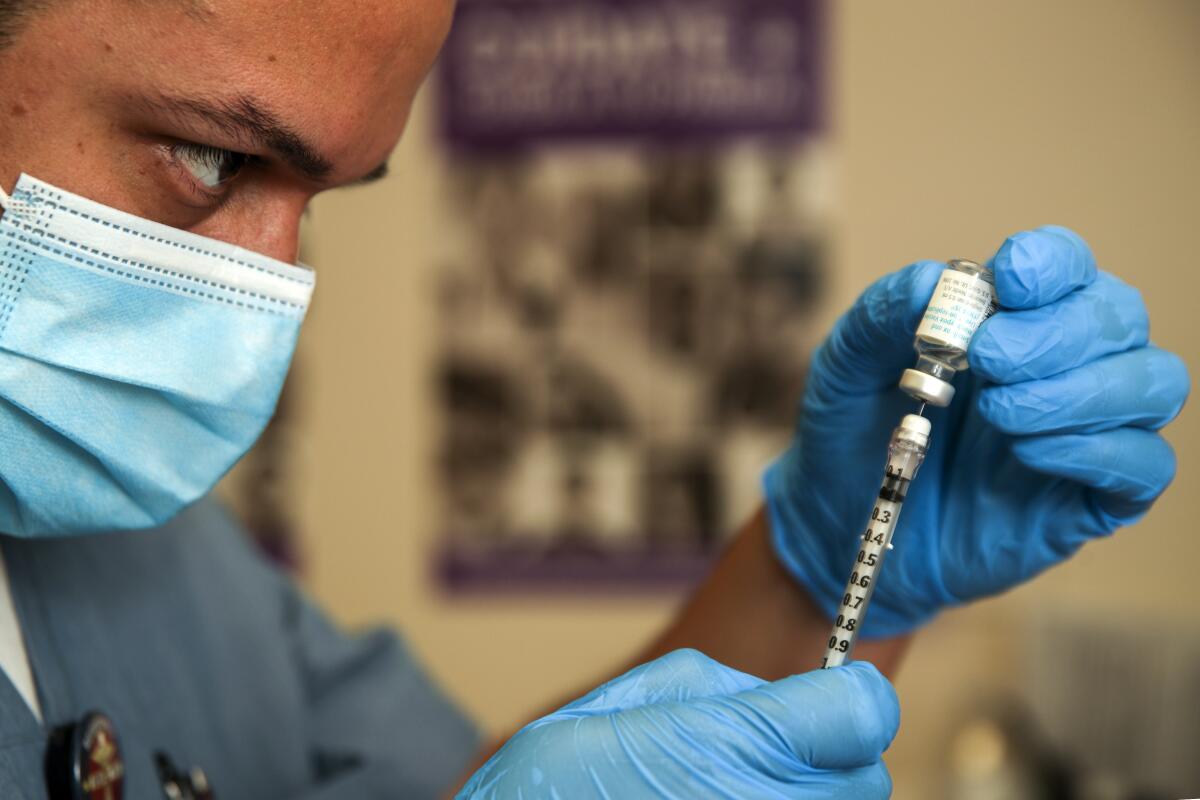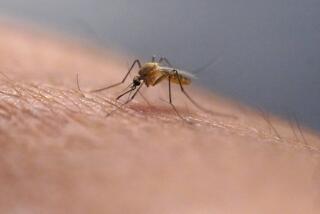Mpox is on the rise in L.A. County. Here’s how to avoid it

- Share via
New cases of mpox in Los Angeles County rose considerably in the last two weeks, local health officials said Monday.
The “concerning increase” of the disease took reported cases from an average of fewer than two per week — a level that had been consistent for several weeks — to a total of 10 in the county in the last two weeks.
The virus, formerly known as monkeypox, spreads through “close contact with body fluids, sores, shared bedding or clothing or respiratory droplets,” the county health department said. A multi-country outbreak that began in May 2022 spurred the declaration of a public health emergency by the U.S. and the World Health Organization. Cases subsequently declined with vaccines and treatments.
Like COVID-19, mpox can be spread through droplets, especially when an infected person kisses someone else or coughs or sneezes near them.
Symptoms of the virus include “rash or unusual sores that look like pimples or blisters on the face, body and genitals,” as well as “fever, chills, headache, muscle aches or swelling of lymph nodes.”
Mpox is not life-threatening but can lead to severe illness, according to the Centers for Disease Control.
The public health department advises:
- testing for those with symptoms
- prevention measures around sexual activity
- vaccination, especially for those in at-risk groups
Those with symptoms should be tested, the statement said, and healthcare providers should report any suspected cases to the department.
Many of the prevention tips issued by the county are standard safe-sex practices, including wearing condoms and exchanging contact information with sexual partners.
Jynneos, the two-dose vaccine recommended by county health officials, is the best way to prevent the spread of the virus, the statement said.
Though the vaccine is available to all, specific subgroups especially at risk of exposure to mpox are “highly encouraged” to get vaccinated: those who have sex with transgender people, those who engage in “commercial and/or transactional sex” and people living with HIV.
Partners of those listed above are also especially at risk, the county said.
More to Read
Sign up for Essential California
The most important California stories and recommendations in your inbox every morning.
You may occasionally receive promotional content from the Los Angeles Times.











